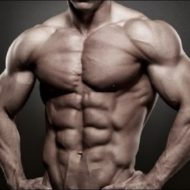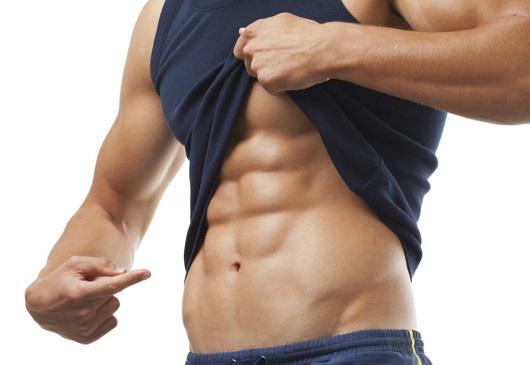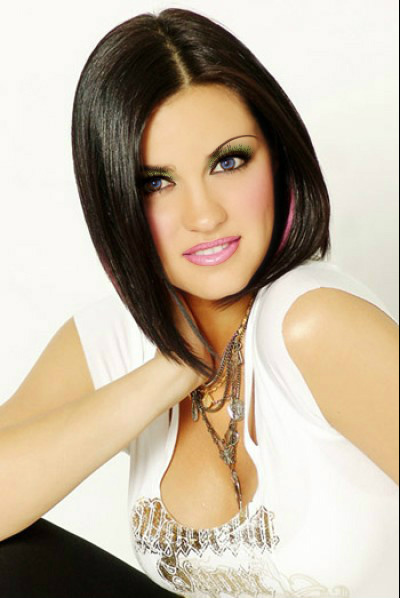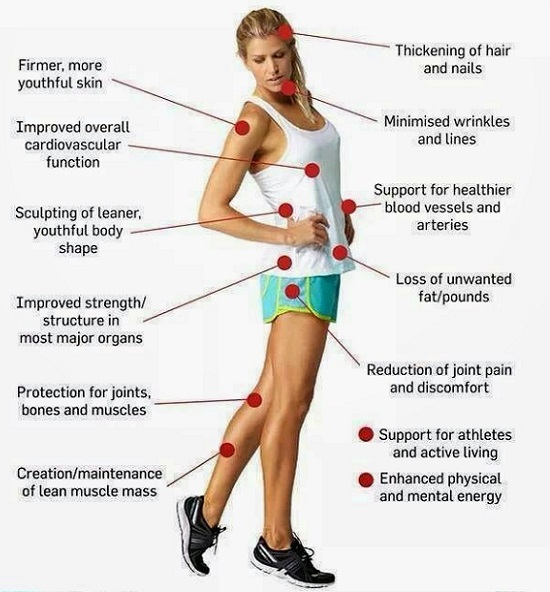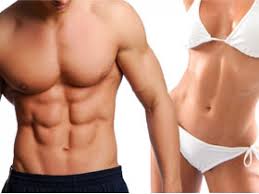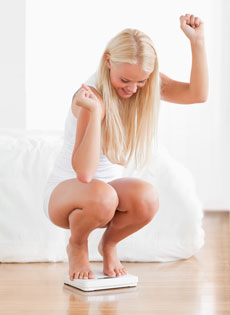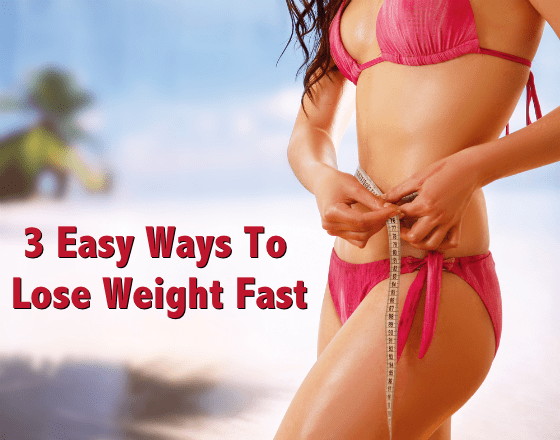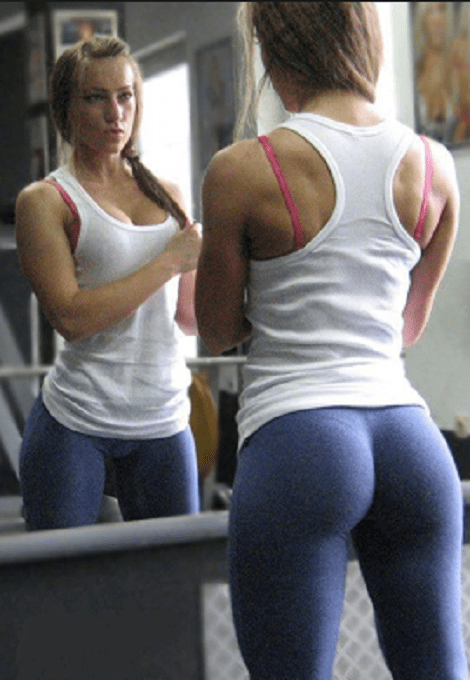“Why The Ketogenic Diet and Ketosis Gets Your Body Into Melt Down Fat Burning Mode Fast?”
Confused about how keto affects fitness levels? What’s healthy eating in this day and age because there’s many diets, nutrition plans, workout plans, daily plans…
Need help with that?
Ketogenic diet is a special case of the low-carb diet.
In fact is even lower in carb than a low carb diet which means there are fewer low net-carb vegetables…
And more nuts and oils.
Otherwise the keto nutritional plan is similar to low-carb meals.
Dear Friend,
The ketogenic eating plan forces the body to burn fats rather than carbohydrates.
Normally, carbohydrates contained in food are converted to glucose…
They’re transported around the body for energy.
However, if there is very little carbohydrate in the diet…
The liver converts fat into fatty acids and ketones which serves as the energy source.
An elevated level of ketone bodies in the blood is referred to as ketosis.
Keto is a great way to lose fat!
Although it makes for a difficult long term nutritional plan because the world is not keto.
Non-keto temptations are everywhere…
Keto as a long term nutritional plan is not for everyone.
However, keto meal plan helps to keep you in ketosis, not get you there.
To get into ketosis you have to reduce your net carbs more than this.
This meal plan is ideal if ketosis fits into your a lifestyle rather than a short term diet.
To be healthy long term, you need vegetables and fiber as part of your ketosis maintenance.
You see, eating carbs is similar to the fuel gauge sitting on empty all the time…
Whether or not your tank is full you just keep eating (refueling). Why?
Because you feel you’re going to run out of fuel at any moment.
So there’s nowhere for all the fuel to go except (stored as fat).
Allow me to explain…
After years of eating the wrong foods…
Studies have shown it actually changes brain chemistry.
Excessive eating of carbs damage signals the brain sends.
The signals the body receives and responds by regulating metabolism.
However, eating foods in wrong amounts…
And at the wrong times throughout each day causes inflammatory cells to enter the brain.
This overloads your brain overtime.
And actually causes incremental brain damage.
The result is a broken metabolism…
It damages two appetite hormones which regulates fat and controls weight.
And because of this cumulative damage…
Your body’s natural fat burning signals don’t get through.
Your brain can’t tell you how much body fat is being stored?
And that’s a common misconception about a ketogenic diet is the high fat.
And this kind of diet must increase cholesterol in your body and clog your arteries…
Have you been waiting to start a ketogenic diet or just want a better way to stay on track?
Imagine people stop and stare with a jaw dropped disbelief.
They say how did you do it?
You simply say “my body said “I’m in…I’m just not hungry and I really mean it!”
Let’s talk about hidden metabolic dysfunction so many people have without realizing it…
This can also be the reason why so many debilitating diseases like type-2 diabetes…
High blood-pressure…
Heart disease, strokes, cancer, sleep apnea, osteoarthritis…
Fatty liver and kidney disease are on the increase.
The essentials of ketones, ketosis and metabolic acidosis…
It’s one of the most misunderstood and poorly used strategy for optimum health.
Unfortunately, the ketogenic diet is almost always represented as a health threat in America.
This is second only to all the misinformation…
And the supposed benefits of eating carbohydrates.
The ketogenic diet is supported by today’s most respected medical resources…
Including premier textbooks on physiology, biochemistry…
And trusted journal resources like the Journal of the American Medical Association.
Did you know we are all unknowing subjects to a giant experiment?
The government and media have for decades touted a diet rich in carbohydrates…
And all without solid medical evidence supporting this outspoken stance.
Yes! Over 50 years Americans have been encouraged to eat a carbohydrate-rich diet.
The food pyramid itself sits on a foundation built of carbohydrates, right?
And yet this is the same diet farmers use everyday to fatten their cattle.
In the case of government run food programs…
Ever wonder why carbohydrates are given such authority even mandated?
How can this be?
Why does it fly in the face of common sense?
Because for hundreds of years…
Our ancestors thrived on whole-food diets.
These foods are built on a foundation of protein and essential healthy fats.
In fact, there was almost no room or need for carbohydrates.
Around 1950 there started a concerted effort to “push” carbohydrates as primary nutrition.
And all this happened without any hard science to support it’s merits.
Would you agree at best it’s been a giant experiment?
Are you curious to know the results of this experiment so far?
Since the inception of the carb-based nutrition plan…
The incidence rates for diabetes and obesity have climbed steadily.
Reaching unprecedented heights in today’s modern society.
Heart disease and strokes have followed a similarly sharp trajectory.
And increases in the use of prescription heart medications…
And conditions of high blood pressure and hypertension.
According to scientific study…
Over one third of children and adolescents are considered overweight or obese.
And more than 78.6 million adults are obese.
The obesity-related disease rates have risen to incredible heights.
And carry dire health consequences…
Even the Centers for Disease Control considers it an epidemic.
However, the fact is people are still surprised.
And why is this the most shocking aspect?
When we examine facts and apply clear, logical, and convincing comprehensive analysis…
The real picture begins to emerge.
Here are the plain and simple facts…
Otherwise known as the truth about nutrition.
Carbohydrates are either aldehyde or ketone compounds.
Carbohydrates contain the building blocks for ketones which is good.
Carbs create an insulin spike which is not so good.
Insulin spikes becomes problematic over time.
Hello diabetes…anyone?
Biochemically ketones are preferred fuel for heart, liver and skeletal muscles.
Expecting vital organs to perform while fueled by a carbohydrate-rich diet…
It’s like using regular unleaded gasoline in an engine designed to run on ultra-premium.
Yes! The mechanical engine isn’t the same as a biological engine.
Regards of the example used to illustrate the point…
The engine will run however you’ll have massive problems down the road.
Ogden C, Carroll M, Kit B, Flegal K. Prevalence of Childhood and Adult Obesity in the United States, 2011-2012. The Journal of the American Medical Association. February 2014…
Ketones are the simple byproduct of burning fat.
It’s a fact of nature.
The unhealthy obsession to avoid ketone creation keeps your body piling on the fat.
And hangs onto excess body fat.
Ketosis is NOT the same as metabolic ketoacidosis.
Low blood pH (metabolic acidosis) does happen with extremely high levels of ketones are present.
However, unless you are diabetic…
Or enduring a severe week-long fast…
It’s impossible for your body to produce the number of ketones to push your body that far.
Are you beginning to see the pattern here?
Ketones are building blocks for some of your most vital organs.
The result is your body has been forced to adapt and run on a less ideal fuel.
Carbohydrates…
The result is obesity, illness and a massive reliance on pharmaceuticals.
Using long term prescription drugs to cope with our ever declining health…
The push for carbs without comprehensive studies regarding…
And the impact of this nutritional shift has been studied and documented.
Science does agree on one fact…
Mother Nature never intended carbohydrates to be our primary fuel source.
The anecdotal evidence stacking up against high carbohydrate diet is overwhelming.
Today the evidence is almost staggering…
Utilizing ketones (non-diabetic) is the body’s preferred energy source.
And leading biochemistry and physiology textbooks support this fact.
Unfortunately the misinformation and lies doesn’t stop with ketones.
The popular food myths you’ve heard by experts in health and fitness magazines…
You should eat small meals multiple times throughout day to keep your metabolism high.
The insulin crash created by excess consumption of carbohydrates has created a cycle of crash and craving.
In fact, this is exactly the same cycle diabetics are forced to cope with on a daily basis.
However, periods of fasting have been a part of human evolution since the dawn of man.
When we were primarily hunter-gatherers…
Our body was designed to go extended periods of time without food.
It took hundreds of thousands of years of evolution to develop those traits.
That evolution can’t be undone by recent arrival of domestic, grain-centric agriculture.
Following mainstream advice to eat every 2 hours is surefire to boost the diabetes epidemic.
Ketosis cannibalizes muscle tissue…
The body adjusts quickly as you make the transition from carb-centric fuel to ketones.
In as little as three days after changing a diet your body requires two thirds less glucose.
How does that happen?
The body recognizes the quick fuel provided by carbohydrates is less available…
And automatically begins switching to the consumption of ketones.
Once your body switches fuel sources…
It still has everything it needs to create and support brain and muscle tissues.
Our bodies are starving for nutrition when we are consuming loads of carbohydrates.
The best way to build lasting muscle is add protein to your diet.
Bottom line you’re not going to waste away anytime soon…
Consume too much protein (ketones) and you’ll be headed for kidney failure.
It’s carbohydrates, not protein that are hard on the kidneys.
Excess carbohydrates cause blood glucose levels to spike.
This spike stresses kidneys causing them to work harder.
Kidneys need to switch into overdrive to clear excess glucose from your system.
This is why diabetes is the single greatest cause of kidney failure!
On the flip side…
Nitrogen from protein consumption is converted to urea in the liver.
The kidneys excrete urea via normal body processes.
The carbons are oxidized creating carbon dioxide and water as a by-product.
Ketones are used to help fuel the kidneys muscles and heart…
All completely natural and normal functions.
Science has proven that high protein diets are bad for you…
Do a quick search for “high protein diet effects on kidneys”…
You’ll find numerous articles attesting to the body’s efficacy in dealing with excess proteins.
Want the layman’s summary?
Our bodies are designed to deal with excess amounts of protein.
A result of protein being a dominant nutrition source for humans over millions of years.
Excess protein causes calcium to be leached from bones…
The result is an increased probability of developing osteoporosis.
Protein is a key delivery mechanism for calcium.
(Textbook of Medical Physiology state’s) “protein function transports calcium into cell cytoplasm.”
Furthermore “rate of calcium absorption is proportional to quantity of the calcium binding protein.”
Is it possible protein could simultaneously be a primary calcium delivery mechanism…
While draining calcium from our bones?
You can slip into ketoacidosis so quickly that you won’t even know you are sick!
Diabetics are certainly prone to experiencing ketoacidosis faster than normal.
There are several vital systems in place…
Which sound the alarm in advance of any permanent or life threatening damage.
Your respiratory system will tell you…
As you approach ketoacidosis your breathing become rapid and shallow.
This happens at about twice your normal rate.
It’s an obvious indicator something is wrong…
And would lead you to seek medical attention.
Your renal system will tell you…
Excessive thirst and frequent urination.
These are common signs your renal system is attempting to rebalance itself.
If you experience renal abnormalities, seek medical attention.
Also understanding the role salt plays in your circulatory system is of prime importance.
Even though there’s still a lot of hype marketing for reduced sodium products…
It still plays up the dangers of dietary salt which is a lie.
In fact, you need sufficient levels of sodium bicarbonate in your diet…
Low salt means you may be at risk for an impaired circulatory system.
Don’t worry about eating too much salt!
Your renal system automatically adjusts to keep your system’s sodium levels in check.
Your gut will tell you…
You may experience abdominal pain and decreased appetite…
Including excess fatigue and general weakness.
If you’re eating a diet likely to escalate ketones in your system…
And you experience the onset of any of these symptoms.
Recognize them as warning signs…
Given the severity of these symptoms!
It’s highly unlikely they’d be unnoticed and untreated until it’s too late.
You should eat a low-protein diet to protect your kidneys.
After all that’s what patients with kidney failure are advised.
As we’ve already discussed…
Protein does not cause kidney failure!
Unless you’re a severe diabetic 2…
And you consume massive quantities of carbohydrates…
The normal function of a healthy kidney automatically repels any excess protein easily.
In fact, it is designed to do so.
Only TYPE I diabetic without access to insulin could possibly have problems eating protein.
It’s worth noting excessive consumption of carbohydrates and sugar…
Are what causes diabetes and kidney damage in the first place.
Here’s a simple analogy…
Let’s say your friend sprains an ankle while training together for a marathon.
She goes to see the doctor and he informs her to avoid running on her sprained ankle.
This is because it causes additional and possibly permanent damage.
When she tells you the doctor’s diagnosis and advice…
You decide you too should avoid running…
Even though your ankle isn’t sprained.
Does that make sense?
So why does it make sense to eat less protein when your kidneys aren’t damaged?
Eating high protein means your gut and liver utilize most of the absorbed amino acids.
These are converted to glucose…
And provides the body everything it needs to suppress harmful spikes in blood glucose.
Diets limited in protein interfere with this process…
Causing breakdowns and wreaking havoc on other body systems.
You need protein to survive…
You need protein for healthy muscles, kidneys and heart.
Eliminating or reducing protein from your diet doesn’t make sense.
While do so many people point to rat-based lab studies to discredit benefits of high-protein?
Why focus on low-carbohydrate diets?
It should be clear you’re a human being and not a lab rat…
The same way clinical trials are conducted…
The pharmaceutical trials can look promising during lab-rat phase of experiment.
In real life application it frequently proves it.
The lab-rat conclusions are erroneous.
Tests are often done in such a way no scientist or physician would be able to replicate it.
If this is the case for the human phase…
So can anyone clearly draw a conclusive result from these original test results?
In Conclusion…
The facts in this cheatsheet show overwhelming benefits of switching to a low-carb diet.
Contrary to the arbitrary “health guidelines” illustrated by the food pyramid…
Eating excessive carbohydrates can be linked to high rates of diabetes…
High blood pressure, hypertension and obesity.
The body is designed to survive and thrive on a diet high in protein.
Including essential healthy fats and low in carbohydrates.
The bottom line:
It’s time to end the grand “carbohydrate experiment” and take back control of your health.
Science proves the healthy benefits are real.
Thousands of years of evolution proves it’s just the way Mother Nature originally intended.
Further evidence if your health really matters to you…
It’s always good to do your own research than rely on misinformation.
You know supplement and pharmaceutical companies have their own agenda.
You’d be wise to believe otherwise…
In the spirit of empowering yourself to make smart decisions for your own health…
Below you’ll find a list of medical references you may find fascinating and mind-blowing.
P.S I trust you don’t ever have battle cancer like so many people do…
Until you finally realize how little time you have left to start living the life you want.
Just ask yourself this…
Am I living the life I imagined for myself when I was a child?
References:
Glucose [sugar from carbohydrates] causes diabetes! Diabetes 2001; 50:1683-1690
Glucose NOT body’s preferred energy source; fatty acids are. Basic Medical Biochemistry – A Clinical Approach, pgs: 29, 145, 203, 272, 357
Excess carbohydrate [more than 4-5 ounces] prevents the body from burning fat and increases stored body fat. Textbook of Medical Physiology, pgs 871, 936; Basic Medical Biochemistry – A Clinical Approach, pgs 24, 394
Humans can’t utilize fructose [sugar] from more than 2 pieces of fruit at a time. Basic Medical Biochemistry – A Clinical Approach, pg. 404
Carbohydrates cause insulin levels to reach 10-15 times normal and stay elevated for 23 hours. Textbook of Medical Physiology, pg. 977
Adipose tissue [fat] is stored ONLY when eating carbohydrates. Basic Medical Biochemistry – A Clinical Approach, pg. 510 Sugar [carbohydrate] stops body from producing growth hormone.
Basic Medical Biochemistry – A Clinical Approach, pg. 702
Cellulose [fiber] cannot be digested by humans. Essentials of Biochemistry, pg 185 “Bad cholesterol” [LDL] produced from carbohydrates. Basic Medical Biochemistry – A Clinical Approach, pgs: 25-26, 512
Butter is used directly for energy. Textbook of Medical Physiology, pg. 843
Protein is GOOD for KIDNEYS. Basic Medical Biochemistry – A Clinical Approach, pg. 653
Eating carbohydrate SLOWS METABOLISM; fat and protein digestion increase metabolism. Textbook of Medical Physiology, pg. 908
